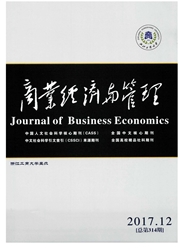

 中文摘要:
中文摘要:
现有文献就企业规模对企业商业信用供给有不同的研究结论,说明这一方面的研究还有待完善。本文结合数理模型和实证研究,分析不同企业规模下,融资路径不同对企业商业信用供给的影响。研究发现,我国中小企业在发展未达到一定规模之前,受市场竞争劣势影响,需要提供大量商业信用来维持市场生存和发展,而此时由于我国金融系统对中小企业的信贷歧视,获得银行信贷支持比较少,因此需要大量的商业信用融资来支持商业信用提供。随着商业信用融资的增加,融资成本提高,最终导致商业信用提供力度逐步下降。当企业发展超出一定规模后,银行信贷支持逐步增强,企业可以用银行信用替代成本更高的商业信用融资,导致商业信用融资逐步下降,同时也使得企业提供商业信用的能力上升。文章研究结论表明,商业信用提供与企业规模之间的关系不是简单的线性关系,而是一个二次函数关系。
 英文摘要:
英文摘要:
Current literature draw contradictive conclusions on the effect of assets scale to commercial credit supply, which indicates a necessity for further research. In this article, we use mathematic model and empirical test to analyze the effect of financing channel on commercial credit supply under different assets scales. We find that before reaching a certain scale, due to their inferior position in the commercial market, small and median enterprises (SMEs) must provide a great deal of commercial credit to maintain their survival and growth. Owing to credit discrimination of our financial system to SMEs, SMEs obtain less bank credit than large companies, thus they need more commercial credit financing. With the increasing of commercial credit financing, the rise of financing cost leads to the gradual decline of commercial credit supply. After achieving a certain scale, banks give more credit to the firm, the firm can substitute bank credit for commercial credit at a higher cost, and this leads to the gradual decline of commercial credit financing and the rise of the potential of commercial credit supply. We argue that the relationship between the commercial credit supply and the firm scale is not just a simple linearity, but a quadratic.
 同期刊论文项目
同期刊论文项目
 同项目期刊论文
同项目期刊论文
 期刊信息
期刊信息
